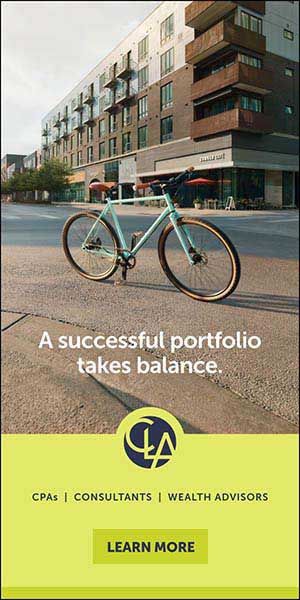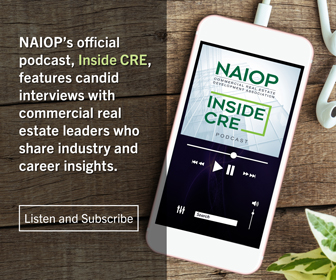CEO on Leadership: Laura Hines-Pierce

The leader of Houston-based Hines talks about leadership, the current challenges in the industry and becoming co-CEO of a global real estate investment, development and management firm.
Development: What attracted you to a career in commercial real estate?
Laura Hines-Pierce: I grew up around the commercial real estate industry, but it wasn’t always my goal to make it my career. I have a passion for art; I studied art history and pursued a career in the field while at Sotheby’s in New York. But around that time, which was over 10 years ago, I found myself drawn toward what was going on at Hines. I saw parallels between art and architecture and was excited by the innovation and community-building aspects of commercial real estate. It was then that I decided to join the firm, and it’s one of the best decisions I’ve ever made. I’ve been able to participate in grassroots movements to bring a focus on diversity and inclusion to the company, work on projects like River Point in Chicago and redefine our investment management platform. I am thrilled to guide the company as co-CEO in partnership with my father.
Development: What is your primary role as co-CEO of Hines today?
Hines-Pierce: As the pace of innovation in real estate is finally catching up with other industries, my primary focus has always been — and continues to be — positioning Hines at the forefront of those changes.
This co-CEO structure, while unique, has many benefits. One of the most important is the different perspectives we bring both from a gender and generational standpoint. This helps push us to better decisions and better outcomes.
Development: What qualities do you look for when hiring senior leadership?
Hines-Pierce: It all starts with people. Each person at Hines has a chance to make important contributions to meeting our goals. Along the way, we do a lot of good for our communities, the built environment and our fellow employees. We look for individuals who strive to be the best and embrace the opportunity to be entrepreneurial in their own ways. Employees are expected to always do the right thing because, ultimately, that sustains us as a firm.
Development: Heading a global firm with a presence in 285 cities and 28 countries, what are your key leadership challenges today?
Hines-Pierce: Like other companies during the pandemic, we had to address immediate challenges and adapt. The office and retail sectors, along with many other classes of real estate, were decimated, but throughout the crisis we’ve demonstrated resilience and have come out better positioned. Also, like many companies, our culture has changed due to the shift toward hybrid and remote work. Our leadership team is focused on how to build and sustain culture virtually while making the most of the time we spend together in-person.
We’re also very focused on environmental, social and governance (ESG) and how to ensure that Hines’ commitments are meaningful in terms of the impacts they’ll make on our people and the planet. Our founder, my grandfather, was a mechanical engineer with a passion for efficiency, so energy conservation is embedded in our DNA — our standards helped develop the LEED rating system. We’re thinking about how to reduce both operational carbon and embodied carbon, and we named a vice president of carbon strategy who will coordinate our comprehensive efforts globally.
Development: How do Hines’ headquarters and a company office in another city work together to successfully manage a project in real time?
Hines-Pierce: Through collaboration, communication and share of ownership, Hines can successfully manage a project in real time. Our local offices are our “boots on the ground” and deeply imbued with Hines’ culture and best practices, so that connection is practically seamless. We have regional CEOs around the world who have the autonomy and authority to make decisions that are right for their regions.
Hines has a group called Conceptual Construction that gets involved in almost every major development we do around the world. They bring the full knowledge, best practices and risk management of Hines’ 65 years of experience to bear on each project, in partnership with the teams on the ground that have the intimate knowledge of that project, site and strategy. Perhaps most importantly, many of the team members working on a project are invested in it alongside the family and our investors, so they’re incentivized to see the project succeed and are completely aligned with the firm and our partners. In the company’s early days, my grandfather implemented this concept when he could no longer oversee every project. He wanted to make sure the people working on a development benefited from its success so they’d be as dedicated as he would be. It has worked well for us over the past 65 years.
Development: As part of the team that established the OneHines Women’s Network, could you talk about your commitment to diversity, equity and inclusion and why it is important to Hines?
Hines-Pierce: One of my goals is to close the gender gap in real estate, and I hope other firms elevate and hire more female leaders. The OneHines initiative supports an inclusive culture in which all Hines employees feel valued and have equal opportunity to achieve their maximum potential. With offices around the world and a workforce of more than 4,850 professionals — 40% of which are female — we know that diverse skills and viewpoints make us stronger and better able to serve our investors, partners, clients and communities. And our DE&I initiatives are a huge focus for us and tie into our larger, long-term ESG strategy.
Development: What do you see as the greatest challenges for the industry over the next year and over the next three to five years?
Hines-Pierce: As we look to the future, there are many definitive trends we are seeing, but the two most important are ESG and innovation. ESG will take the whole firm’s focus and commitment for Hines to continue to lead in this space in the future. Putting an increased emphasis on re-evaluating our innovation strategy by focusing on disruptive innovation, technology and data will be pertinent to our success as well. The challenge is how quickly things will be changing around us, but that also creates significant opportunity.
Development: Where are the greatest opportunities for Hines in the years ahead?
Hines-Pierce: The last two years have been two of our most productive. We’ve made strategic investments to continually diversify our portfolio and are focused on a variety of asset classes. We have advanced our investment management platform and launched three flagship funds in the U.S., Europe and Asia.
In New York, where COVID hit the hardest, we’ve seen swift changes in our projects, and one of our newest partner projects is nearly completely leased. We are a development partner at Manhattan’s One Vanderbilt, which opened in the middle of the pandemic, and the Class A trophy tower is now more than 90% leased. In San Francisco, we unveiled plans for the acquisition and redevelopment of the historic PG&E office campus.
Adding social value to our properties and to the communities where we are active is a key challenge next to fighting climate change. The global housing crisis is harming the social fabric of our communities. We are planning to do our part to provide attainable housing where we can and have made strides in the U.S. and Europe.
Development: Many members of your team belong to NAIOP chapters across the nation. Why is being part of NAIOP important to Hines?
Hines-Pierce: Hines and NAIOP share many of the same values. Hines will continue to expand on our legacy of supporting our people and communities by partnering with our communities and others across the industry. By partnering with organizations like NAIOP, we can learn from a network of professionals and continue to educate our workforce and enhance expertise through diverse perspectives and outlooks on today’s challenges.
Development: What is the best advice you have been given over the course of your career in real estate?
Hines-Pierce: As a CEO and a mom, I’m fortunate to work for a company that allows me to prioritize and succeed at both. On a personal level, at the time of this interview, I was pregnant with my second child, and I hope by the time my children come of age it is not out of the ordinary to see a pregnant CEO successfully lead a firm. Additionally, the best advice and input I’ve gotten is just to listen as much as possible and ask questions wherever you can.
Development: What crucial lessons have you learned during your time in the business?
Hines-Pierce: I think the most important thing is just that most people around me know more than I do, so I’m always looking to learn from and listen to those around me. I always want to be in learning mode, no matter the point I’m at in my career.
Development: How do you relax during your off hours?
Hines-Pierce: Family is very important to me. My favorite part of my day is spending time with my son and husband, bringing them to visit my parents, and enjoying holidays and celebrations with my brothers and sister.
Ron Derven is a contributing editor for Development magazine.






